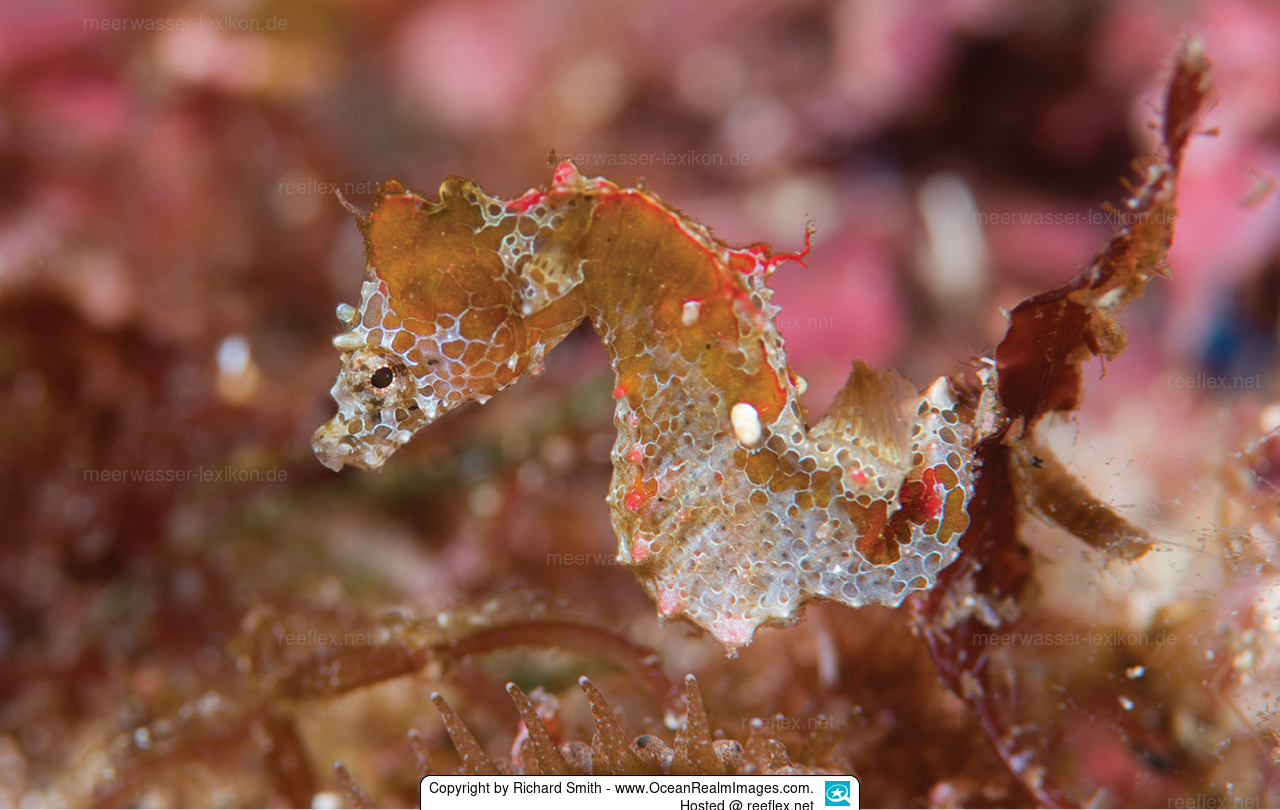Info
2018
Very special thanks for the first photos of the newly described Japanese pygmy seahorse (Hippocampus japapigu) to Dr. Richard Smith, United Kingdom.
The Japanese pygmy seahorse, Hippocampus japapigu, was found in rocky reefs of Japan in a depth range of 8 - 15 meters.The body colouration is brown, beige, to pink and whitish with a reticulate pattern of white lattice over the body, which often has a black spot within it.
In contrast to all other knows pygmy seahorse, Hippocampus japapigu does not live with gorgonian or soft coral, these little seahores prefer subtropical and temperate reefs with algal turfs and small hydroids.
Source:
Hippocampus japapigu, a new species of pygmy seahorse from Japan, with a redescription of H. pontohi (Teleostei, Syngnathidae)
Authors: Graham Short, Richard Smith, Hiroyuki Motomura, David Harasti, Healy Hamilton
ZooKeys 779: 27-49. https://doi.org/10.3897/zookeys.779.24799
Feeding intake.
The fish take a long time to eat at the beginning, before the food is taken up, a close inspection is carried out. After acclimatisation, the offered frozen food is eaten without problems. It should be noted that wild-caught fish behave differently than offspring when it comes to food intake. In the case of offspring, the size of the fish purchased also plays a role in the choice of food.
You can download the minimum requirements for keeping seahorses (in accordance with EC Regulation 338/97) from the Federal Agency for Nature Conservation as a PDF here: https://meerwasser-lexikon.de/downloads/BfN_Mindestanforderung_haltung_seepferdchen_hippocampus.pdf
Very special thanks for the first photos of the newly described Japanese pygmy seahorse (Hippocampus japapigu) to Dr. Richard Smith, United Kingdom.
The Japanese pygmy seahorse, Hippocampus japapigu, was found in rocky reefs of Japan in a depth range of 8 - 15 meters.The body colouration is brown, beige, to pink and whitish with a reticulate pattern of white lattice over the body, which often has a black spot within it.
In contrast to all other knows pygmy seahorse, Hippocampus japapigu does not live with gorgonian or soft coral, these little seahores prefer subtropical and temperate reefs with algal turfs and small hydroids.
Source:
Hippocampus japapigu, a new species of pygmy seahorse from Japan, with a redescription of H. pontohi (Teleostei, Syngnathidae)
Authors: Graham Short, Richard Smith, Hiroyuki Motomura, David Harasti, Healy Hamilton
ZooKeys 779: 27-49. https://doi.org/10.3897/zookeys.779.24799
Feeding intake.
The fish take a long time to eat at the beginning, before the food is taken up, a close inspection is carried out. After acclimatisation, the offered frozen food is eaten without problems. It should be noted that wild-caught fish behave differently than offspring when it comes to food intake. In the case of offspring, the size of the fish purchased also plays a role in the choice of food.
You can download the minimum requirements for keeping seahorses (in accordance with EC Regulation 338/97) from the Federal Agency for Nature Conservation as a PDF here: https://meerwasser-lexikon.de/downloads/BfN_Mindestanforderung_haltung_seepferdchen_hippocampus.pdf







 Richard Smith - www.OceanRealmImages.com
Richard Smith - www.OceanRealmImages.com


























































